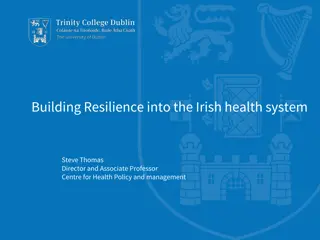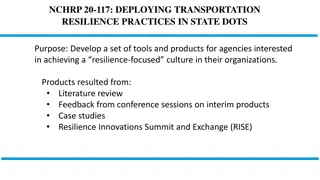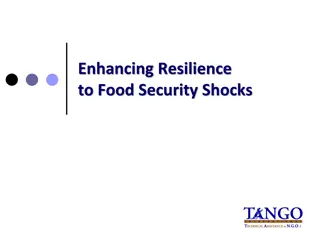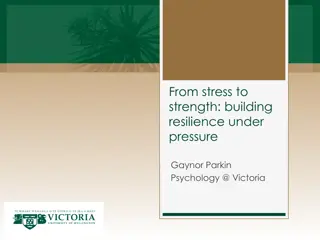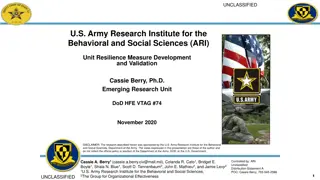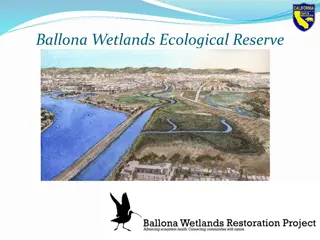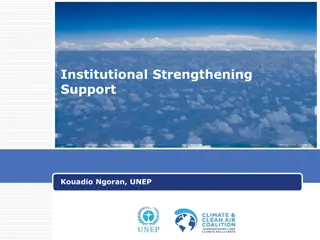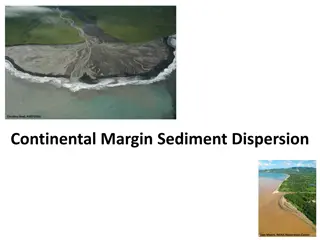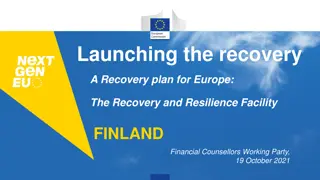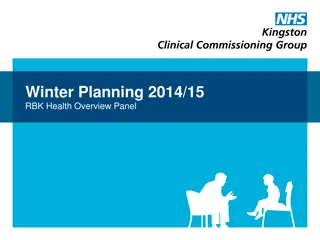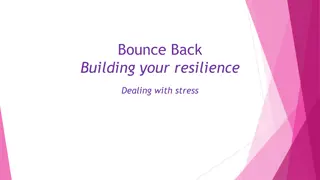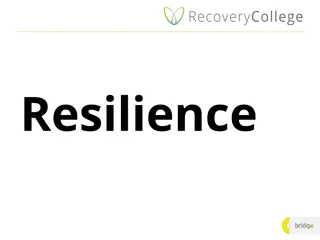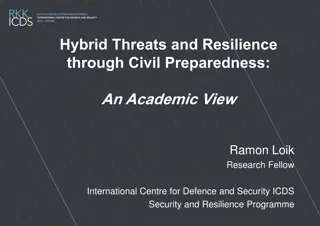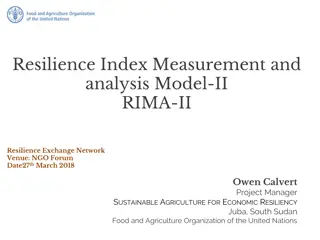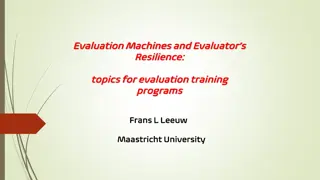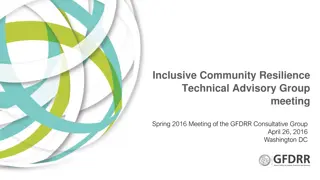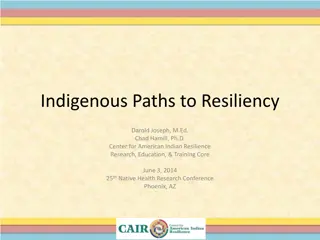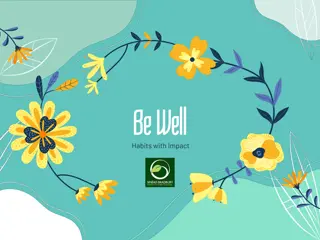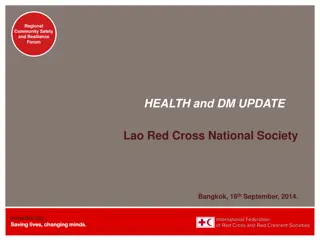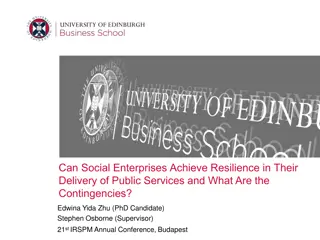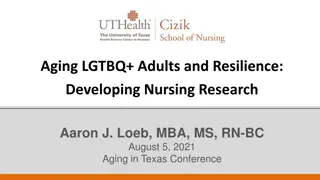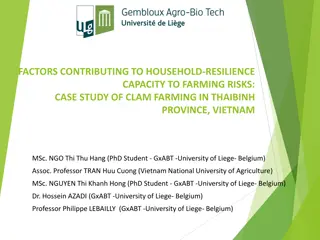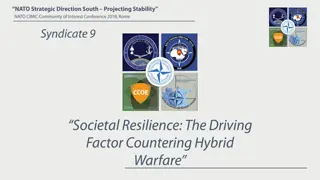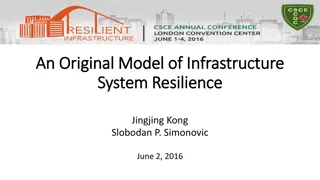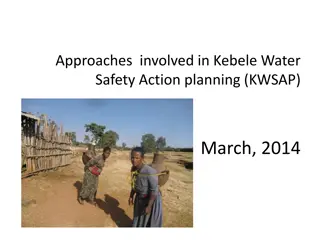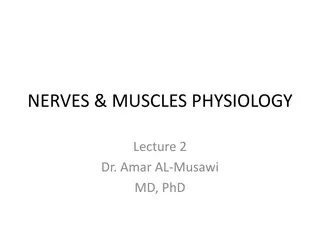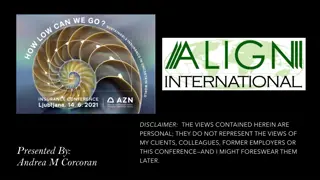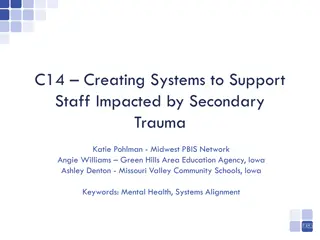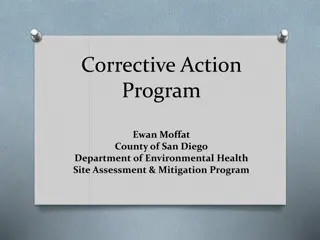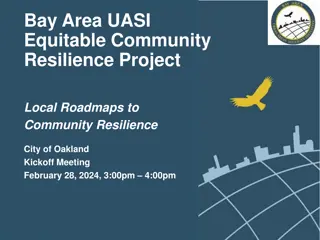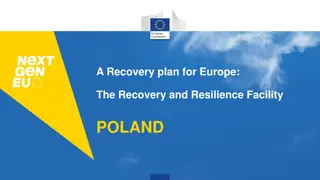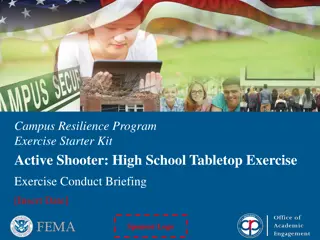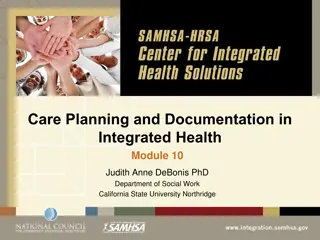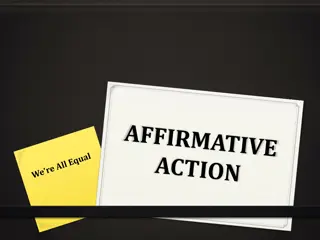Estuarine Resilience Action Planning Overview
Estuarine Resilience Action Planning (ERAP) led by Michael Moses aims to enhance coastal resilience through community-driven, green infrastructure solutions. The three-part approach includes needs assessment, action analyses, and goal setting. The focus is on leveraging local partnerships and incorporating natural infrastructure such as wetlands and barrier islands. Desired outcomes include fostering local community action, integrating with broader planning initiatives, and securing funding for resilience projects. Key partners include Tillamook County and Coos County partnerships, along with various state and federal agencies.
- Estuarine Resilience
- Coastal Resilience
- Green Infrastructure
- Community Partnerships
- Resilience Planning
Download Presentation

Please find below an Image/Link to download the presentation.
The content on the website is provided AS IS for your information and personal use only. It may not be sold, licensed, or shared on other websites without obtaining consent from the author. Download presentation by click this link. If you encounter any issues during the download, it is possible that the publisher has removed the file from their server.
E N D
Presentation Transcript
Estuarine Resilience Action Planning (ERAP) National Fish and Wildlife Foundation National Coastal Resilience Fund May 2022 (Michael) Moses, Estuarine Resilience Coordinator
Estuarine Resilience Action Plans (ERAP) Three-part plans Approach Bottom-up, community driven Led by local community organizations Engage local stakeholders Assisted by technical expertise Leverage existing and anticipated planning efforts Scientifically grounded, guided Pilot process, refine, and roll out Focus on natural (green) infrastructure Phase 1: Estuarine Resilience Needs Assessment Phase 2: Estuarine Resilience Action Analyses Phase 3: Estuarine Resilience Goals & Priorities 2
Natural (Green) Infrastructure Overview Barrier islands Bioswales/rain gardens Cover crops Floodplain restoration Hydrologic restoration Large woody debris Coastal vegetation/SAVs Shellfish, coral reefs Set-back levees Two-stage ditches Vegetated dunes Wetlands Source: NOAA Office for Coastal Management 3
Desired Outcomes Short-term Long-term Local jurisdictions and community partners will be able to Local community action for resilience Integration and advancement on other state and regional planning initiatives Future efforts will build on this work to expand partnerships and capacity coastwide understand local threats and needs understand resilience action costs and benefits partners are prepared to seek funding and move estuarine resilience projects forward. 4
Partners Tillamook County Tillamook Estuaries Partnership County, cities, NCLC, TCSWCD, Port of Garibaldi, local WCs, state agencies Coos County Partnership for Coastal Watersheds; SNERR County, cities, SNERR, CWA, Wild Rivers Land Trust, Coast Alliance; state/fed agencies, Coquille Indian Tribe OCMP DLCD, ODFW, OPRD, OWRD, DSL Others UO Institute for Policy Research and Engagement (IPRE) 5
Thank you! Michael Moses (971) 332-0946 Michael.Moses@dlcd.oregon.gov






